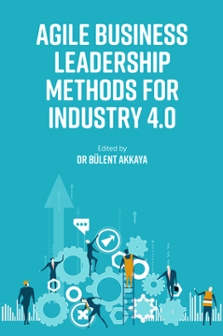
Index
Agile Business Leadership Methods for Industry 4.0
ISBN: 978-1-80043-381-6, eISBN: 978-1-80043-380-9
Publication date: 5 October 2020
Citation
(2020), "Index", Akkaya, B. (Ed.) Agile Business Leadership Methods for Industry 4.0, Emerald Publishing Limited, Leeds, pp. 327-335. https://doi.org/10.1108/978-1-80043-380-920201018
Publisher
:Emerald Publishing Limited
Copyright © 2020 Emerald Publishing Limited
INDEX
Index
- Prelims
- Chapter 1: A Review of Modern Leadership Styles in Perspective of Industry 4.0
- Chapter 2: Industry 4.0 and Marketing 4.0: In Perspective of Digitalization and E-Commerce
- Chapter 3: Agile Leadership Model in Health Care: Organizational and Individual Antecedents and Outcomes
- Chapter 4: Industry 4.0 and International Trade: The Case of Turkey
- Chapter 5: Industry 4.0 and its Role on Labour Market: A Comparative Analysis of Turkey and European Countries
- Chapter 6: Digital Taylorism as an Answer to the Requirements of the New Era
- Chapter 7: Leadership Styles and Female Managers in Perspective of Agile Leadership
- Chapter 8: The Effect of Industry 4.0 on Accounting in Terms of Business Management
- Chapter 9: Biomimicry and Agile Leadership in Industry 4.0
- Chapter 10: The Role of Agile Leadership in Organisational Agility
- Chapter 11: Strategic Leadership in Perspective of Industry 4.0
- Chapter 12: Industry 4.0 and Agile Firms
- Chapter 13: Leadership and Industry 4.0 As A Tool to Enhance Organization Performance: Direct and Indirect Role of Job Satisfaction, Competitive Advantage and Business Sustainability
- Chapter 14: Factors of Successful Women Leadership in Asian: Moderating Role of Political Differences and Organization Culture
- Chapter 15: Era of Industry 4.0 Technologies and Environmental Performance of Thailand’s Garment Industry: Role of Lean Manufacturing and Green Supply Chain Management Practices
- Chapter 16: The Interaction Among Organizational Flexibility, Competitive Strategy and Competitive Advantage: A Path Analytic Study
- Index